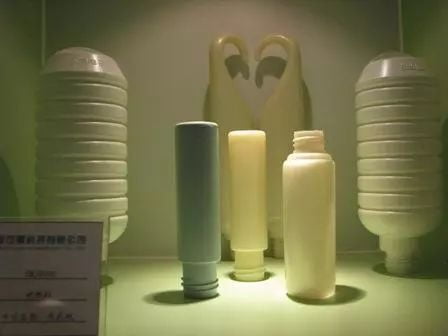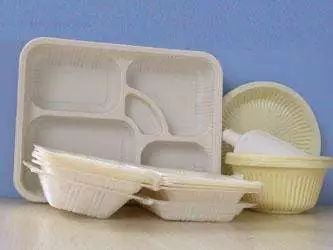The demand for biodegradable materials is gradually increasing as people are increasingly interested in environmentally friendly packaging. People began to look for and develop some sustainable or ecologically recyclable environmentally friendly materials, biodegradable plastics when it is one of the most environmentally friendly and promising green materials, this article shall describe several common plastics of biodegradable plastics, we learn together.
01 degradable plastic
A plastic that loses certain properties (such as integrity, molecular weight, structure or mechanical strength) and/or undergoes fragmentation as a result of significant changes in the chemical structure of the material over a period of time and containing one or more steps under defined environmental conditions. It should be tested using standard test methods that reflect changes in performance and determine its category by degradation mode and use cycle. Degradable plastics are classified into biodegradable plastics, compostable plastics, photodegradable plastics, and thermoxic degradable plastics according to their designed final degradation pathways.
02 biodegradable plastic
Plastics that are degraded under natural conditions such as soil and/or sand, and/or specific conditions such as composting conditions or anaerobic digestion conditions or aqueous cultures, caused by the action of naturally occurring microorganisms such as bacteria, molds and algae, and eventually completely degraded into carbon dioxide (CO2) or/and methane (CH4), water (H2O) and mineralized inorganic salts of the elements they contain, as well as new biomass.
It is also commonly referred to as biodegradable plastic.
Classification of biodegradable plastics: According to the composition of raw materials and different manufacturing processes, they can be divided into the following three types: natural polymers and their modified materials, microbial synthetic polymers and chemical synthetic polymers.
The following biodegradable plastics are commonly used today: poly-3-hydroxyalkanoate (PHA), polylactic acid (PLA), poly-ε-caprolactone (PCL), and polybutylene succinate (PBS).
1. Poly-3-hydroxyalkanoate (PHA)

Polyhydroxy fatty acid esters are aliphatic copolyester of different structures synthesized by microorganisms through fermentation of various carbon sources. The most common of these are poly-3-hydroxybutyrate (PHB), polyhydroxyvalerate (PHV) and copolymers of PHB and PHV (PHBV). PHB is a thermoplastic polyester that is widely found in nature, especially among bacterial cells. Many of the physical and mechanical properties of PHB are close to those of polypropylene plastics, but it is biodegradable and biocompatible, degrading completely into β-hydroxybutyric acid, carbon dioxide and water in living organisms.
Materials made from this bioplastic can be used in drug release systems, implants and some devices that decompose harmlessly in the body after healing, but PHB is stiffer and a bit more brittle compared to polypropylene. By copolymerizing PHB with PHV (PHBV), we can improve PHB's weakness of high crystallinity and brittleness, and improve its mechanical properties, heat resistance and water resistance.
PHB/PHV copolymers are already available under the trade name Biopol. Biopol is composed of a range of different materials, and the strength and toughness of the copolymer is optimal when the maximum content of PHV does not exceed 30%, and the PHB/PHV is 89/11. These products can be used in food packaging, cosmetics, pharmaceutical, hygiene and agricultural industries.
2. Polylactic acid (PLA)

Polylactic acid (PLA) is a polyester chemically synthesized using lactic acid, a product of microbial fermentation, as a monomer.
Polylactic acid production is based on lactic acid as a raw material. Traditional lactic acid fermentation mostly uses starchy raw materials. At present, the United States, France, Japan and other countries have developed the use of corn, sugar cane, sugar beets, potatoes and other agricultural by-products as raw materials for fermentation production of lactic acid, and then the production of polylactic acid. Corn is the raw material of choice for the biodegradable plastic PLA. The process of manufacturing the biodegradable plastic PLA is as follows: corn is first ground into flour to separate the starch, then the raw glucose is extracted from the starch, and finally the glucose is converted into lactic acid using a fermentation process similar to beer, and then the extracted lactic acid is made into the final polymer, PLA.
Polylactic acid (PLA) is a biodegradable polymer produced from renewable resources such as cereals. In the PLA production route, the lactic acid monomer is first prepared by hydrolysis of the cereal precipitate to glucose, which is converted to sodium lactate by a fermentation process. The lactic acid is further concentrated and then polymerized in the order of polycondensation (to form pre-polymer), thermal depolymerization (to form dipropyl cross-ester), ring opening and depolymerization. The molecular weight of PLA obtained is up to 75,000 g/mol.
The lactic acid polycondensation reaction by the usual method yields only lactic acid oligomers.
The most studied method of preparing high molecular weight PLA is through the ring-opening polymerization reaction of propyleneglycolate, which is synthesized from lactic acid oligomers by high temperature cleavage. For the ring-opening polymerization reaction mechanism and reaction conditions of propyleneglycerides, detailed studies have been reported. Recently, Mitsui Chemicals in Japan has proposed a new technology to prepare PLA directly by lactic acid polycondensation reaction without going through propyleneglycolate. This technology uses a highly reactive catalyst to obtain high molecular weight PLAs by solution polycondensation. Due to the presence of asymmetric carbon atoms in lactic acid and propanediol, PLAs with different conformational regularities, such as L-PLA, D-PLA and DL-PLA, can be obtained by polymerization.
PLA has good moisture resistance, grease resistance and airtightness, and is stable at room temperature, but degrades automatically at temperatures above 55°C or under the action of oxygen-rich and microorganisms. After use, it can be completely degraded by microorganisms in nature, and eventually produce carbon dioxide and water without polluting the environment, which is very beneficial to protect the environment.
The degradation of PLA is divided into two stages: 1) firstly, pure chemical hydrolysis to lactic acid monomer; 2) degradation of lactic acid monomer to carbon dioxide and water by the action of microorganisms. Food cups made of PLA can be completely degraded in only 60 days, truly achieving both ecological and economic effects.
3. Polyε-caprolactone (PCL)
Poly-ε-caprolactone (PCL) is a low melting point polymer obtained by ring-opening polymerization of ε-caprolactone, with a melting point of only 62°C. The degradability of PCL has been studied since 1976, and PCL can be completely decomposed by microorganisms in both anaerobic and aerobic environments. Compared with PLA, PCL has better hydrophobicity but slower degradation rate; at the same time, its synthesis process is simple and low cost. PCL has excellent processing performance and can be made into films and other products with common plastic processing equipment.
At the same time, PCL and a variety of polymers have good compatibility, such as PE, PP, PVA, ABS, rubber, cellulose and starch, etc., through the blend, as well as copolymerization can be obtained excellent performance of the material. In particular, its blending or copolymerization with starch can maintain its biodegradability and reduce cost, thus attracting attention.
PCL can be blended with starch to obtain a degradable plastic with good water resistance, and its price is similar to that of paper; using in situ polymerization, ε-caprolactone can be grafted with starch to obtain a thermoplastic polymer with excellent properties.
4. Polyester - PBS/PBSA
Advantages of polyester biofractionated plastics compared to similar products.
(1) One of the fatal weaknesses of the above mentioned biodegradable plastics (polylactide, polyε-caprolactone, polyhydroxyalkylate) is its poor heat resistance, which affects its application in the catering field.
(2) The above bio-degradable plastics (polylactide, poly-ε-caprolactone, polyhydroxyalkylate) are processed under harsh conditions, and there are some insurmountable difficulties in industrialization.
(3) PLA is a water-degradable bioplastic that cannot accept water molecules during preservation, and its performance cannot be guaranteed during ordinary storage and normal use.
Polybutylene succinate (PBS) is a typical polyester biodegradable plastic, which is the best biodegradable plastic material because it overcomes the above weaknesses and has a wide range of applications, It can be used in packaging, tableware, cosmetic and pharmaceutical bottles, disposable medical supplies, agricultural films, pesticide and fertilizer slow-release materials, biomedical polymer materials and other fields. PBS has excellent overall performance, reasonable cost performance, and good application prospects.
Compared with PCL, PHB, PHA and other degradable plastics, the price of PBS is basically the same and there is no advantage; compared with other biodegradable plastics, PBS has excellent mechanical properties and is close to PP and ABS plastics. The heat resistance is good, the heat deflection temperature is close to 100℃, and the use temperature can exceed 100℃ after modification, which can be used to prepare hot and cold beverage packaging and lunch boxes, overcoming the shortcomings of other biodegradable plastics with low heat resistance temperature; The processing performance is very good, and it can be used in all kinds of molding process on the existing general equipment of plastic processing, and it is the best processing performance of degradation plastic, and it can be blended with a large amount of calcium carbonate, starch and other fillers to obtain low-cost products; PBS production can be carried out through a slight modification of the existing general polyester production equipment, the current serious excess capacity of domestic polyester equipment, conversion of production PBS for excess polyester equipment provides a new opportunity.
In addition, PBS degrades only when exposed to specific microbial conditions such as composting, and its performance is very stable during normal storage and use.
PBS can be produced from aliphatic butanedioic acid and butanediol, which are the main raw materials, either through petrochemical products to meet the demand, or through starch, cellulose, glucose and other natural renewable crop products, produced by biofermentation, thus realizing the green cycle of production from nature and back to nature. Moreover, the use of raw materials produced by biofermentation process can significantly reduce the cost of raw materials, which can further reduce the cost of PBS.

